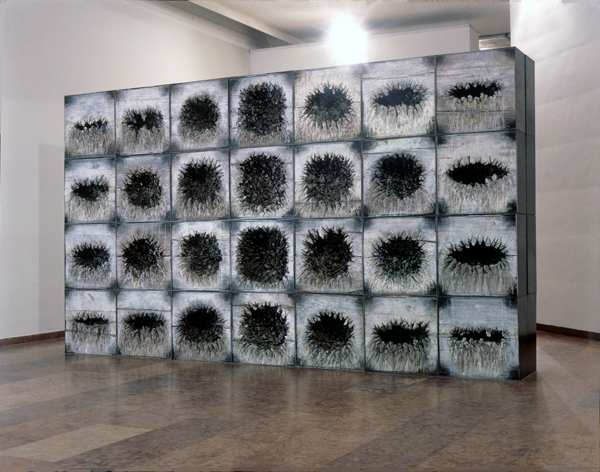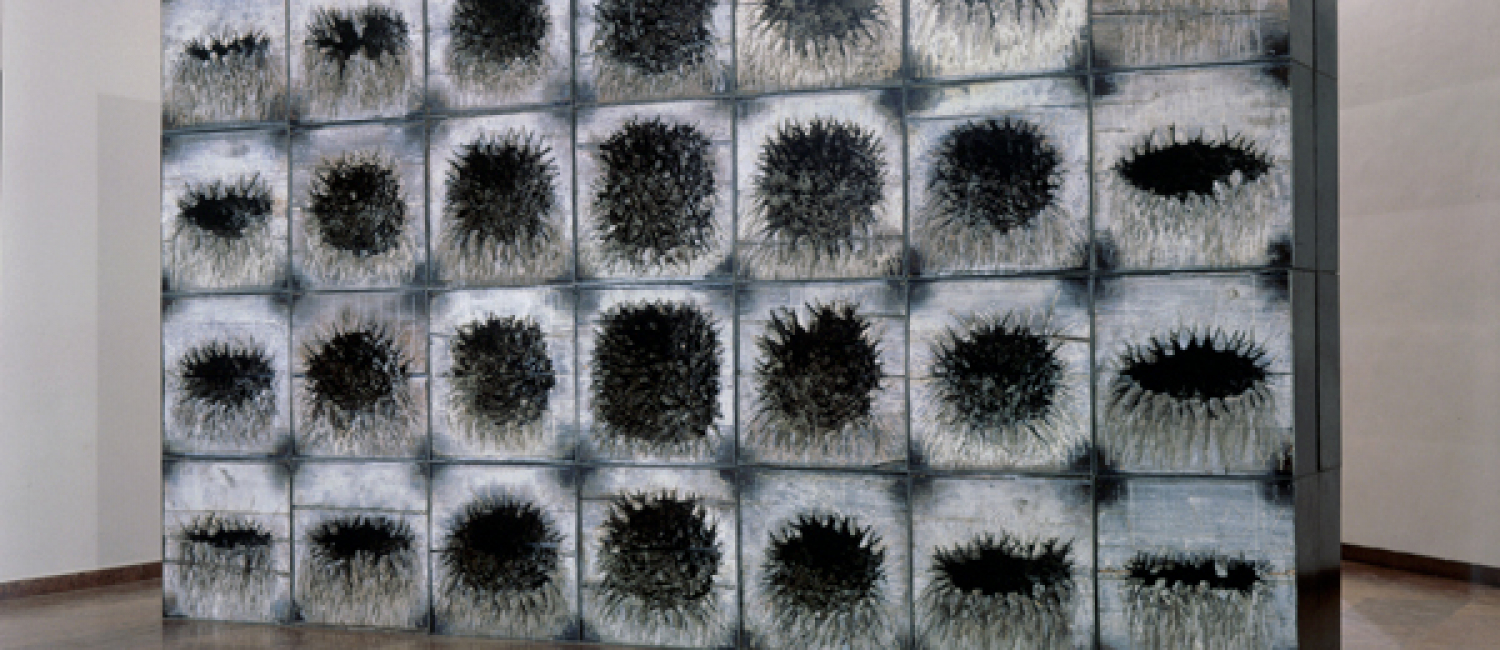Invisible Nature, a show of contemporary Japanese art, was initiated by a Prague art historian, Ivona Raimanová, the Head of the Exhibition Department at the Czech Republic’s Presidential Office at the time. The exhibition was held in September 1993, in the House of the Ball Games and the Royal Gardens at the Hradcany royal complex of Prague. This show was brought over to Budapest with a specific modification, with two artists creating new installations on the site for the occasion. Following the Budapest show, the four Japanese artists presented their works at the Forum Ludwig, Aachen.
The specifically Oriental perception of nature is quite unlike the European approach. Nature, for the Japanese people embraces the universe, with all its forces, including the 20th century cityscapes, along with the industrial civilisation.
Nature, as has been devastated by the modern civilisation, is the very concern of the artists featured in this exhibition. Toshikatsu ENDO created a new, 25-square-metre installation of earth and water for the Budapest show.
Shigeo TOYA’s wooden objects are metaphors of dead nature. His Forest had been shown for the first time at the 1988 Venice Biennial.
Saburo MURAOKA’s installation of oxygen bottles premiered at the Japanese Pavilion of the 1990 Venice Biennial. His flame-cut iron sculpture, with a photograph, as was shown in Budapest, signifies a conteptual–ironic attitude.
Nobuho NAGASAWA, the only woman among the exhibiting artists, who resides in Los Angeles, is known for her immense earthworks. Nobuho’s installation of sandbags, created for the Budapest show, was inspired by the gateway arches of Budapest’s Chain Bridge.
The exhibition was realised with the support of the Japanese Foundation.

